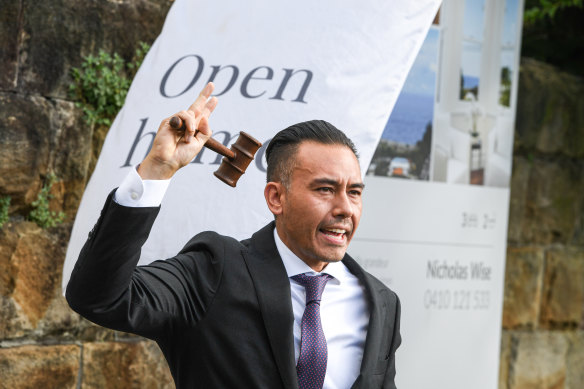By Jim Malo
Stretched homeowners are already asking about switching part of their home loans to cheaper interest-only payments, but experts urge caution when considering the tactic.
After 10 straight rises in the cash rate so far, about 880,000 low fixed-rate mortgages are due to roll off this year, tipping owners onto higher rates that will increase their monthly mortgage repayments and squeeze household budgets.
Options could include refinancing with a different bank to get a cheaper deal, extending the loan term to bring down repayments, or switching from principal and interest payments to interest only.
Switching to an interest-only mortgage would save $460 each month for an owner-occupier with 28 years left on their $750,000 mortgage, RateCity modelling shows.
The downside is they would pay an extra $29,294 in interest over the life of the loan, assuming the borrower switches back to a principal and interest loan in two years.
Refinancing to a cheaper interest rate was a more attractive option, all being equal. It would save the same homeowner $633 a month and $19,225 over two years.

Homeowners are being warned to exhaust other options before opting to move onto an interest-only loan. Credit: Peter Rae
RateCity research director Sally Tindall said trying to get a cheaper rate or refinancing is the best option, if possible.
It may not suit all homeowners, such as those who bought at the property market’s peak and would be in “mortgage prison”.
Mortgage prison occurs when a borrower cannot refinance because they cannot prove they could meet the repayments if interest rates rose another 3 percentage points, or because their home has fallen so far in value it is worth less than their outstanding loan balance.
“Anyone who is in mortgage prison and can’t refinance might have to consider interest only or part payments,” she said. “They should be haggling with their bank in the first instance.
“And then if they still can’t keep up then look at alternatives, such as interest only.”
The absolute last resort should be extending the life of a loan, which Tindall said can be a poor financial decision.
“They may end up deciding to extend their loan term, which is a very costly exercise and ideally should be avoided,” she said.
Axton Finance director Clinton Waters said he typically didn’t offer interest-only loans as a solution to his clients.
“We are noticing people are asking us if we can switch at least part of the loan to interest-only,” he said. “The interest rate you pay on an interest-only loan is more expensive.
“Lenders are fairly hesitant to allow owner-occupiers to switch to an interest-only loan because it can be a leading indicator that they can’t afford that loan.”
The bank regulator clamped down on interest-only lending in 2017 when the property market was booming, which it viewed as higher risk.
CoreLogic head of Australian residential research Eliza Owen said it was likely lenders would aim to help homeowners continue to pay their mortgages, rather than trigger waves of distressed sell-offs.
“They have a stake in the assets [i.e. mortgaged homes], so to have excessive levels of distressed selling would lower the value of these assets over time,” she said.
However, while keen homeowners are enquiring about moving onto interest-only loans, Owen said few would actually need the support.
“We haven’t seen that much stress evident from the high-level metrics,” she said. “I don’t see this being a very widespread option; my guess is people will avoid it if they can because of the additional cost over the life of the loan, but it’s kind of reassuring that that kind of flexibility is available.”
Foster Ramsay Finance director Chris Foster-Ramsay thought interest-only loans could be a popular solution for banks and borrowers over the next year.

Switching to a loan with a lower rate — when possible — is almost always a better deal in the long run. Credit: Peter Rae
“It’s becoming more and more important to people who are finding repayments difficult,” he said. “I foresee that perhaps those types of lending relief offerings during COVID for customers having issues then will probably come back, but on a case-by-case basis.”
However, it wasn’t as simple as asking to move onto an interest-only loan if a borrower thought it would save them a few bucks in the short term, Foster-Ramsay said.
First, lenders would ask borrowers to use any extra repayment money, look at the family budget, encourage a switch from monthly to weekly or fortnightly repayments, and offer financial help.
“These conversations will only come up when refinancing is not an option,” he said.
Tindall said those considering moving to interest-only should move back to a principal and interest loan as soon as possible.
“Moving to interest-only isn’t the craziest idea,” she said. “Paying something on your mortgage is better than paying nothing.
“The faster you get back to paying down your debt, the better you will be in the long term.”
clarification
An earlier version of this article misstated the name of the company where Clinton Waters is a director. It is Axton Finance.